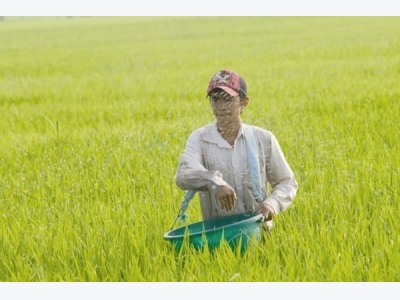Vietnam spends heavily on fertilizer, pesticide imports

Fertilizer and pesticide imports surge in the January-September period - PHOTO: TL
Ho Chi Minh City – Fertilizer and pesticide imports, especially from China, have amounted to nearly US$1.7 billion in the year to September, the Ministry of Agriculture and Rural Development said in a report.
The ministry’s data shows that Vietnam purchased 3.57 million tons of fertilizers valued at US$955 million in the nine-month period, up 19.7% in volume and 16.7% in value against the year-ago period. And data updated to end-August indicates shipments from China in January-August made up 39.3% of the nation’s total fertilizer imports, growing 9.8% in volume and 15.5% in value versus the same period last year.
The steep fertilizer import rise in the first eight months was also seen at key suppliers such as Russia with 75.5%, Japan with 48.2%, South Korea with 26.7%, Belarus with 19.7% and Laos with 15.9%.
As for pesticides and pesticide materials, import shipments increased a staggering 47.9% year-on-year to US$739 million in January-September and Chinese products accounted for 55% of the total.
As a result, the import spending of the agriculture sector in the January-September period surged 19.1% year-on-year to US$21.15 billion.
However, agriculture remains a sector with a high trade surplus, at nearly US$6 billion. Specifically, agro-forestry-fishery exports reached nearly US$27 billion in the first nine months, up 14.1% over the year-ago period.
Of which, some commodities registered strong export growth, such as rice with 20% to US$2.02 billion, rubber with 52.7% to US$1.66 billion, cashew nuts with 25% to US$2.55 billion, and wood and wooden products with 10% to US$5.51 billion.
Related news
 EU tops the list of Vietnam coffee importers
EU tops the list of Vietnam coffee importers Vietnam exported more than 1.03 million tons of coffee to earn over US$2.34 billion in the first eight months of this year, down 19.5% in volume but up 3.5%
 Sustainable agriculture development in ASEAN integration
Sustainable agriculture development in ASEAN integration Improving the quality of agricultural products, ensuring farmers’ interests, and sustainably developing agriculture in ASEAN topped the agenda of a just
 Rubber exports increase significant but do not be subjective
Rubber exports increase significant but do not be subjective After the crisis period 2012-2016, since the second half of 2016, rubber exports have recorded positive signals when the volume as well as export value